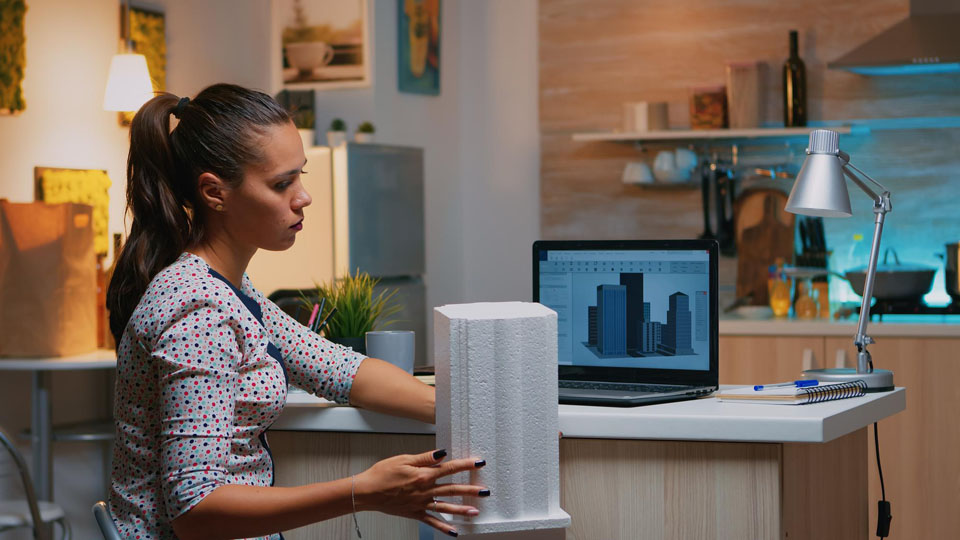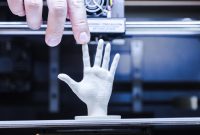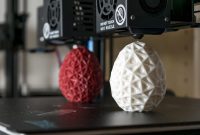Most organizations and startups in the civil engineering industry focus on infrastructure development, construction, maintenance, and management. When discussing technology-driven businesses, bloggers frequently overlook civil engineering. However, like businesses in other industries, civil engineering firms have already begun to use new technologies to prepare for Industry 4.0.
One way that Business 4.0 is influencing the civil engineering industry is via additive manufacturing, often known as 3D printing. Most civil engineering firms now employ 3D printing with polymers and metals to save the time and money required to construct complicated projects. They also use modern techniques based on 3D-printed models to repair and maintain buildings.
Simultaneously, construction 3D printing allows civil engineering firms to use sustainable materials, reducing their environmental impact and waste. Many businesses already use 3D printers for the building to create structures out of green materials that final longer and require less maintenance.
Some of the most inventive applications of 3D printing in civil engineering
Faster construction
3D printers construct objects by laying down layers of material. As a result, they can produce construction components quicker than conventional methods. Civil engineers can select from various building 3D printers, including material injection, powder binding, and additive manufacturing.
They can also construct structures from polymer, metal, cement, and concrete, among other materials. Civil engineers may accelerate infrastructure development by adopting the correct construction 3D printing techniques and materials. One of the most apparent applications of 3D printing in civil engineering is the construction of buildings and bridges.
Reduced construction costs
In addition to reducing construction time, 3D printing technology allows building engineers to reduce construction expenses significantly. Civil engineering firms might purchase 3D printers for structures to avoid hiring more personnel.
They cannot spend money on workplace safety since they perform less physical labor. In the meantime, 3D printing technologies have significantly reduced construction costs by reducing waste while making it simpler to recycle materials.
Design and Structure Complicated
Traditional construction procedures make it difficult for civil engineers to design and build complex locations. One of the best aspects of 3D printing technology is the ability to create anything. Civil engineers may create structures with complex forms and patterns using 3D modeling technologies. They may update and enhance the digital model without investing additional time or effort.
Civil engineers may employ 3D printers to swiftly and cheaply convert computer blueprints into real-world construction elements. Civil engineers now use 3D printing instead of conventional building techniques to create difficult-to-build structures.
3D-Printed Structures
Civil engineers utilize 3D printers in construction to create building components such as walls and frames. After 3D printing the wall or frame, the power, and pipes are installed separately. However, 3D printers have been employed to piece together many buildings.
Building engineers in China, for example, employed 3D-printed concrete parts to construct a bridge. Similarly, building engineers have employed construction 3D printers to create houses, companies, and hotels all over the globe. To suit the demands of their customers, civil engineering firms often 3D print novel applications for structures.
Strong Structures
Civil engineering firms must not only develop infrastructure but also ensure its durability. Traditional construction processes make it difficult to determine how to enhance a structure by inspecting each component. However, 3D printing enables structural engineers to construct various parts of structures.
Civil engineers may inspect the concrete throughout the early phases of construction. Based on the preliminary findings, they may enhance the material, test other materials, or adjust how the pieces are constructed. Civil engineering firms invest in 3D printers to create long-lasting constructions that don’t need a lot of costly maintenance.
Eco-Friendly homes
Nowadays, most individuals live in environmentally friendly houses. They aspire to create structures out of organic and reusable materials and use energy and resources optimally. In addition to concrete and cement, the new generation of construction 3D printers may employ a variety of green and recyclable materials.
Civil engineers employ 3D printers to create sustainable houses for consumers while saving time and money for construction. Trying out various shapes and sizes may also help to make houses more energy efficient. Civil engineers employ construction 3D printers to create reusable buildings from mud, raw soil, and wood.
New Maintenance Methods
3D printing lowers maintenance expenses by making it simpler to construct long-lasting buildings. Simultaneously, construction engineers utilize 3D printers to discover new ways to maintain buildings, roads, and bridges. For example, they improve roads by replacing heavy materials with asphalt, tar, and various other light materials made available by the development of 3D printers.
Civil engineers, for example, employ 3D-printed pieces to fix specific areas of ancient structures. Leading civil engineering firms spend on research and development (R&D) to create innovative maintenance methods and procedures that involve 3D printing.
Disaster Relief Shelters
It might be difficult for government organizations to locate secure and private locations for individuals to remain after major catastrophes. People affected by major disasters can quickly obtain clothing, blankets, beds, and food from them.
However, they must look for ways to build emergency shelters faster and for less money. Civil engineers utilize 3D printers to assist government organizations in speedily constructing houses for those in need. They employ 3D printing to construct environmentally friendly and low-cost structures swiftly.
Conclusion
When examining how 3D printing may be utilized in civil engineering, keep in mind that the techniques of 3D printing for buildings are constantly evolving. Civil engineers may utilize the new generation of construction 3D printers to create whole structures and construction businesses more accurately. Furthermore, they enable building engineers to test various products that can be utilized repeatedly.





